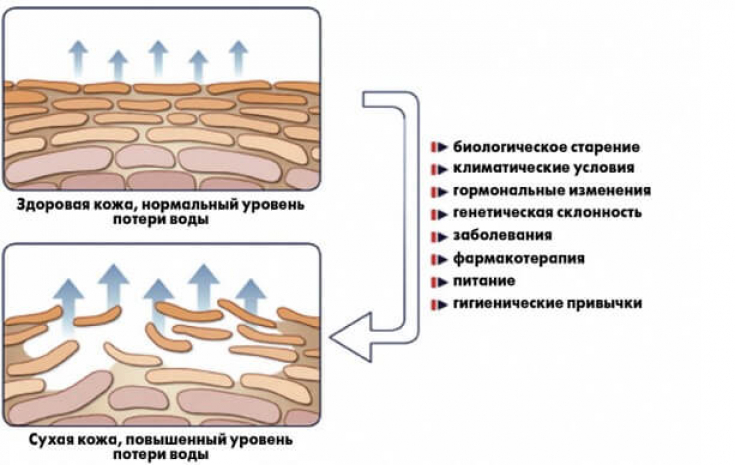Urea is normally found in healthy skin. It is one of the three natural moisturizing factors in the outer stratum corneum of our skin. Two other natural moisturizing factors are lactic acid and amino acids.
Topical preparations of synthetically manufactured urea, alone or in combination with other drugs, may be particularly useful in the treatment of diseases that are accompanied by flaking and dry skin, including atopic dermatitis (eczema), psoriasis and ichthyosis.
On estet-portal.com read how urea affects the skin, and what urea preparations of different forms and concentrations are used for.
How does urea affect the skin
The main effects of urea – this is:
- Moisture – urea is highly hygroscopic (moisture-loving), therefore it attracts and retains water in skin cells;
- Keratolytic effect – urea softens the stratum corneum, which can be easily removed from the surface of the skin;
- Regenerative skin protection – urea has a direct protective effect against drying out of the skin and, with regular use, improves the ability of the epidermal barrier to regenerate;
- Soothing action – urea has an antipruritic effect based on a local anesthetic effect;
- Increase penetration – urea can increase the penetration of other substances through the skin, such as corticosteroids.
Methods for preventing atopic dermatitis in children

Thus, urea is ideal for skin regeneration. This ingredient is of particular value to patients with atopic dermatitis, who need to constantly keep the skin moisturized in order to prevent recurrence of the disease.
What preparations of urea are available
Urea preparations come in different forms and concentrations.
Effective treatment of atopic dermatitis: modern methods
Available Urea dosage forms include:
- cream;
- lotion;
- shampoo;
- shower gel.
The concentration of urea in these products varies from 3 to 40%. The chosen form and concentration depend on the condition being treated and the severity of its clinical manifestations.
Read the most interesting articles in Telegram!
The most commonly used urea preparation – it is 10% cream. The cream helps urea retain water in the stratum corneum longer and prevents water loss by slowing down its evaporation, and therefore it is used in the treatment of atopic dermatitis, ichthyosis and psoriasis.
40% urea in water can be prepared by a pharmacist and used to treat acne conglobata and to dissolve and remove affected nailsee.
How to properly use urea preparations
Urea preparations are for external use only.
Urea should not be used on infected or weeping areas, or where there is severe widespread reddening of the skin.
Urea preparations may be used in children 1 year of age and older with established dermatological disease.
For undiagnosed conditions (normal dry skin), low concentration urea preparations can be used from 3 years of age and older.
Filaggrin gene mutation as a cause of atopic dermatitis
Urea preparations are generally well tolerated.
Side effects that may occur include:
- slight tingling;
- itching;
- rash.
More useful and interesting information on our channel on YouTube:







Add a comment